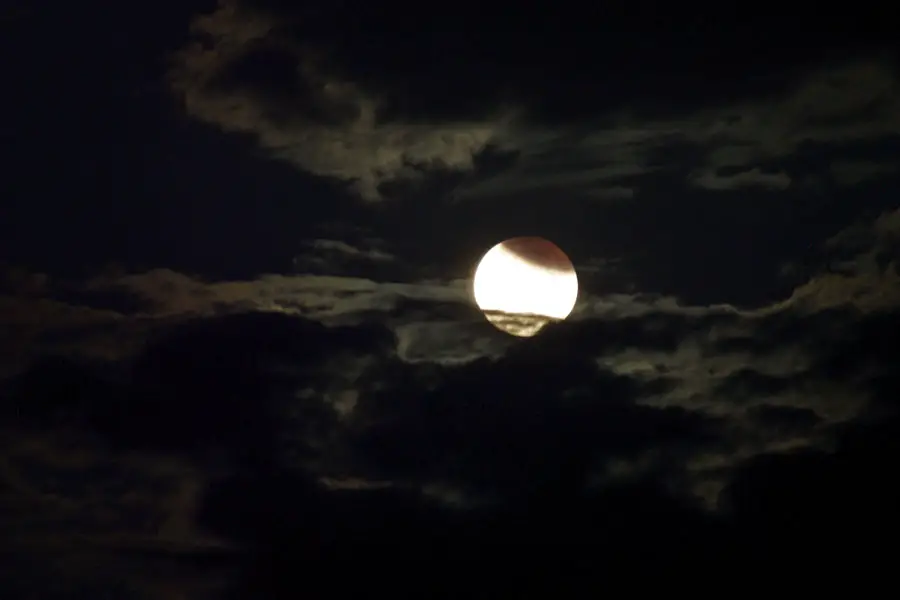The next, as well as the last lunar eclipse of 2021, will occur on Friday, November 19 which will be coinciding with the Beaver Moon. Okay, Beaver Moon for the people living in the northern hemisphere and Flower Moon for the people living in the southern hemisphere.
Apart from that, this eclipse will be a partial lunar eclipse of the moon. It will be visible from some places, and from some, it won’t. WHY? Well, don’t worry, we will talk about this in the later section
But, before going ahead, let me give a short and crisp review of the definition of the lunar eclipse and, of course, its type too. I mean, I just want you to know that why this eclipse of the moon is a partial one, why not the total or penumbral lunar eclipse!
Lunar Eclipse Definition
A lunar eclipse occurs when these two principal criteria are fulfilled.
- First, only on a full moon day, a lunar eclipse can occur. Thankfully, November 19 is a full moon day. So, we are safe here.
- Second, a lunar eclipse will occur when the earth comes between the moon and the sun. In other words, an eclipse of the moon occurs when the earth’s shadow partially or completely blocks the sunlight from falling on the surface of the moon.
In fact, the second criteria i.e the earth’s shadow plays a decisive role in the fact that whether the eclipse of the moon is total, partial, or, the penumbral one.
Types of Lunar Eclipse
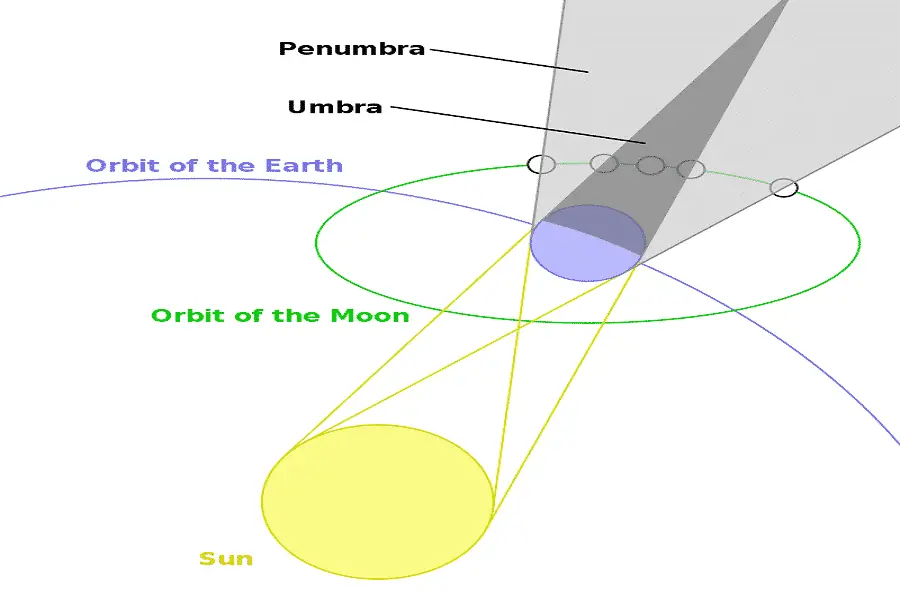
Taking consideration as per the game of shadows, there are generally three types of lunar eclipses. These are the penumbral lunar eclipse, total lunar eclipse, and partial lunar eclipse. (Refer to the above image for proper understanding).
- A penumbral lunar eclipse occurs when the moon passes through the earth’s penumbra.
- A total lunar eclipse occurs when the moon completely passes through the earth’s umbra.
- Similarly, a partial lunar eclipse occurs when the moon partially passes through the earth’s umbra.
I hope now you know why November 19 lunar eclipse is a partial one. Because during the last lunar eclipse of 2021, the moon will partially pass through the earth’s umbra i.e the darkest part of the earth’s shadow.
When and Where to See Next Partial Lunar Eclipse?
Just because of the fact that the earth is round when half of the planet is living in the darkness, at the same time, the other half is enjoying the daylight. Therefore, as a result of the earth’s curvature, and, of course, the earth’s tilt, this eclipse of the moon will be visible only from some specific countries.
Visibility of Partial Lunar Eclipse of November 19, 2021
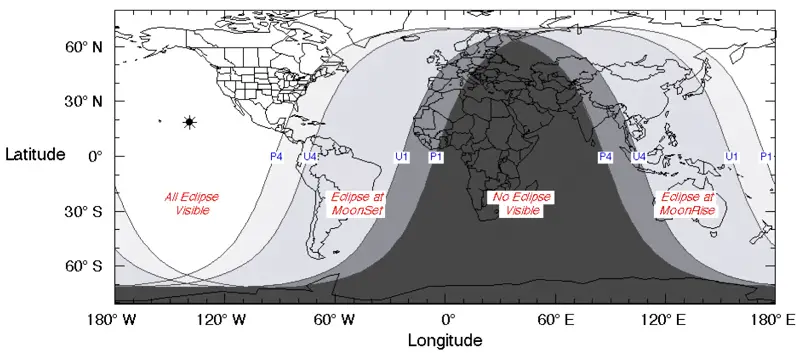
The visibility of the partial lunar eclipse of Nov 19 will solely depend on the fact that where on the earth you reside. (Refer to the above image for proper understanding. The Partiality of the moon will be visible from much of Asia, Australia, and the Americas on Friday, 19 Nov 2021, and some parts of Alaska and Hawaii on Thursday, 18 Nov 2021.
In addition, it will also be visible from the north of Europe and extreme north-east of Europe (north-east of European Russia). Just to let you know that a solar eclipse always occurs within two weeks after the occurrence of a lunar eclipse. Therefore, we have a total solar eclipse on Dec 04 which will be visible only from Antarctica.
Editor’s Choice: Indeed, moon is moving away from earth, BUT WHY?
Timing of Partial Lunar Eclipse of November 19, 2021
According to Fred Espenak, on Friday, November 19, the Penumbral Lunar Eclipse will begin (P1) at 06:02:09 UTC. After that, the Partial Lunar Eclipse will begin (U1) at 07:18:43 UTC following the Greatest Eclipse (G) at 09:02:56 UTC during which 97% of the moon slips into Earth’s umbral shadow. (Refer to the image given below for proper understanding).
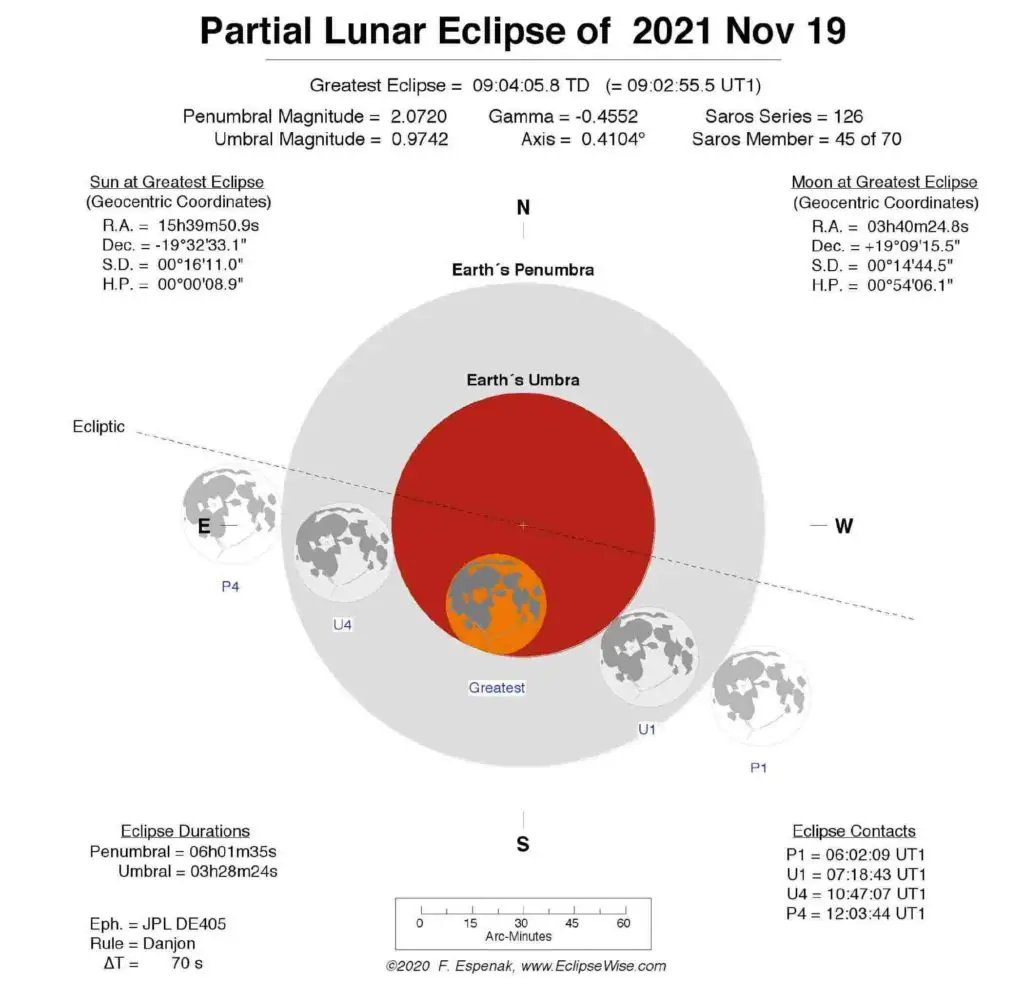
Finally, the Partial Lunar Eclipse will end (U4) at 10:47:07 UTC following the end (P4) of the Penumbral Lunar Eclipse at 12:03:44 UTC. Since only 97% of the moon slips into the Earth’s umbral shadow, that’s why we call the second as well as the last lunar eclipse of 2021 a Partial lunar eclipse. In order to understand it more clearly, refer to the table given below.
Eclipse Contacts: Partial Lunar Eclipse of 2021 Nov 19
| Eclipse Event | Contact | Time (UTC) | |
| 1. | Penumbral Eclipse Begins | P1 | 06:02:09 |
| 2. | Partial Lunar Eclipse Begins | U1 | 07:18:43 |
| 3. | Greatest Eclipse | Greatest | 09:02:56 |
| 4. | Partial Lunar Eclipse Ends | U4 | 10:47:07 |
| 5. | Penumbral Lunar Eclipse Ends | P4 | 12:03:44 |
Some Exclusive Facts About Partial Lunar Eclipse of November 19, 2021
Here are some of the most important and exclusive characteristics facts about the upcoming eclipse of the moon.
- The umbral magnitude of the eclipse is 0.974.
- The penumbral magnitude of the eclipse is 2.07203.
- Partial lunar eclipse of November 19 belongs to Saros 126 Table and is number 45 of 70 eclipses in the series.
- On this day, the moon will be in Taurus.
- For Partial Lunar Eclipse of 2021 Nov 19, Gamma has a value of -0.4552.
Special Thanx to Fred Espenak
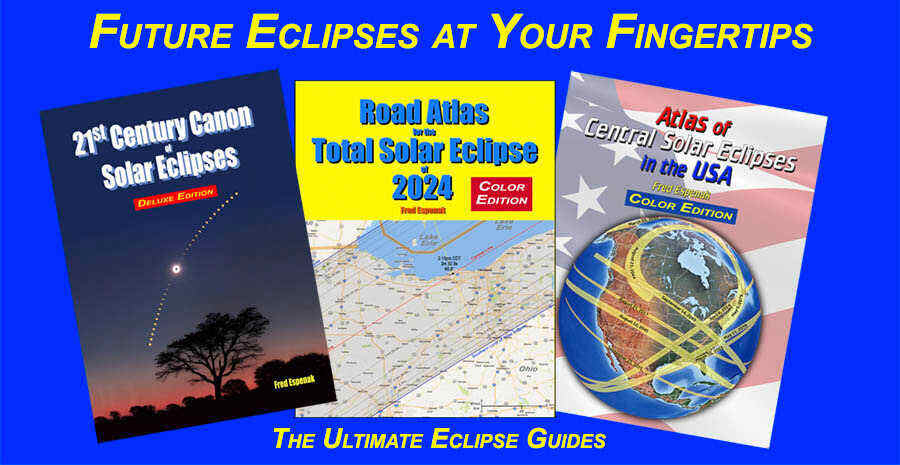
A special thank you note to Mr. Fred Espenak for granting us permission to use the data calculated by him. Fred is a retired American astrophysicist. He worked at the Goddard Space Flight Center. He is best known for his work on eclipse predictions.
Not to mention, he is also the author of several canonical works on eclipse predictions, such as the Fifty Year Canon of Solar Eclipses: 1986–2035 and Fifty Year Canon of Lunar Eclipses: 1986–2035 both of which are standard references on eclipses.
These are just a few to be named. Well, if you want to learn more about the future eclipses at your fingertips, I would suggest you visit his website where you will find all of his Astropixels Publishing.
Safety Issue
Is it safe to look at the lunar eclipse without special glasses? Well, in my view, absolutely yes. It is perfectly safe to look directly at the lunar eclipse 2021. I mean, there is no need for any protective eyewear or special eye covers to protect your eyes. Because the intensity of light during any type of lunar eclipse is very much less as compared to the light emitted during the solar eclipse.
However, if you want to enhance the beauty of your majestic view, you can definitely use a binocular. At last, I wish you good luck with this epic moon gazing. And, do let me know about your astonishing experience in the comment section.
That’s it for this post. If you like this article, share it if you like, like it if you share it. You can also find us on Mix, Twitter, Pinterest, and Facebook. Hey man, If you have come this far, do give us feedback in the comment section. It would make my day. You can also make a donation. Your donations will help us to run our website and serve you BETTER. Cheers!!!
You might also like:
- When & Where to See Next Total Lunar Eclipse of 2021?
- Annular Solar Eclipse 2021 – When, Where, How to see Ring of Fire
- The Science Behind The Solar Eclipse
- Top 6 Solar Eclipse Facts in SIX Minutes
